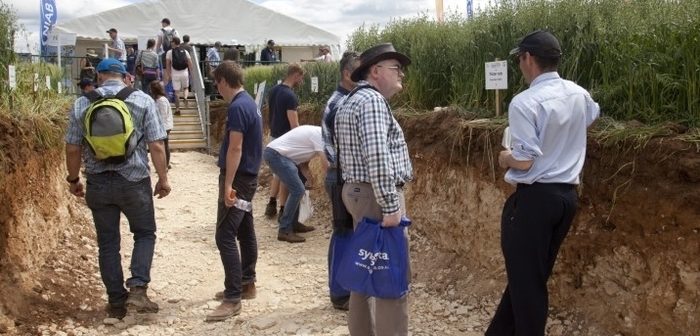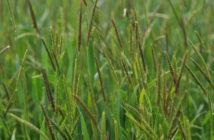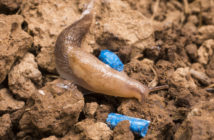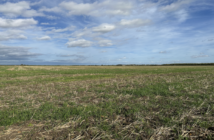Most farmers will dig a hole to assess their soil health, but it’s not often they get the chance to literally get below ground to assess the impact of different crops on soil structure. But at this year’s Cereals Event (30 June – 1 July) in Lincolnshire, farmers can do just that.
The NIAB Soil Hole is a firm favourite with visitors to the Cereals Event, giving farmers a worm’s eye view of life beneath the surface. The 20m long, 2m deep hole provides a showcase for a wide range of research and information on rotations, cultivations, tillage and soil management from NIAB specialists and project partners.
This year farmers will be able to see how different crops can help influence the health and structure of soils. “Rotational decisions are often made with limited thought about the impact on soil,” explains Dr Elizabeth Stockdale, soil scientist at NIAB. “A farmers’ soils are unique; location, crop choice and their management methods mean soils differ from one field to the next – and no farmer truly farms the same way as another.
“But all farmers need to look at using plants and tillage together to help restore soil health and create the ideal structure, with a range of pore sizes for maximum water and nutrient holding capacity.”
So what makes good soil structure? “To have good soil structure there needs to be a mix of big and small pores – good pore size distribution is like a road network allowing the movement and retention of water,” she explains. “The bigger pores are motorways and move water through the soil, while the network of smaller pores are B roads and hold water which plants can draw from when needed.”
Compaction and low biological activity compromise pore networks and result in limited rooting systems which can’t access deeper nutrients and water. This not only affects the crop but increases input costs, due to higher applications.
This year the Soil Hole’s surrounding plots show alternative break crops, herbal ley mixtures and a hybrid versus conventional comparison of above and below ground crop growth in winter oilseed rape, wheat and barley. “What will be interesting to see is the difference in rooting systems between hybrid and conventional crops,” says Dr Stockdale. “If hybrid crops have more vigour on top, does that also mean they have stronger rooting down below? And what does that mean for the soil?”
Herbal leys allow growers to broaden their rotation and boost soil organic matter, and visitors to the Hole can see the difference these can make. They will also be able to see the impact of alternatives to winter oilseed rape like canary seed, spring linseed, lentils and ahiflower alongside spring legumes like lupins, peas and field beans.
The NIAB Soil Hole attracts a lot of attention, so will be operating within Covid guidelines, says event director Alli McEntyre. “To keep visitors safe NIAB has worked hard to create a self-guided tour with information boards throughout to share insights and highlight areas of interest,” she says. “A range of experts will be on hand above ground to answer any questions and we know they are equally as keen to speak with those coming to the event.
“The NIAB Soil Hole will be complemented by soil health seminars in the Cereals AHDB Theatre on day two, presentations within the NAAC Land Drainage Hub, and in the direct drill demo area.”
• The Cereals Event will be held in Lincolnshire on 30 June – 1 July 2021 and will comply with all required biosecurity measures against Covid-19. For more information or to register for tickets visit www.cerealsevent.co.uk.




